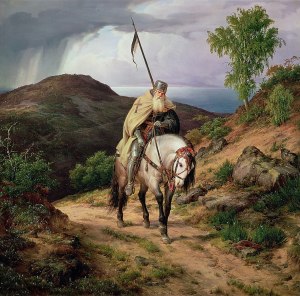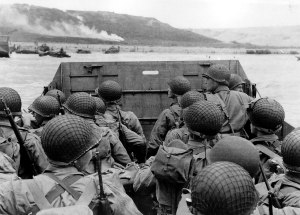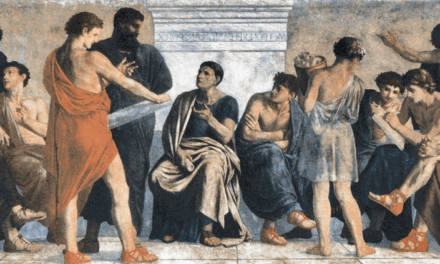We support our Publishers and Content Creators. You can view this story on their website by CLICKING HERE.
This year has seen the passing of three Good Men who lived to be Old Men in the best and fullest sense: Stan Mattson, Fr. Ian Boyd, and James Patrick. Heroes of the Old West, we salute thee!
There are two types of heroism. There is the heroism of Achilles and there is the heroism of Hector. The first is the heroism of the Strong Man who gets even with his enemies through the power that he wields; the second is the heroism of the Good Man who lays down his life in defence of good things worth defending. The first type of hero sacrifices others in pursuit of his own self-empowerment; the second type of hero sacrifices himself to protect the weak from Strong Men seeking self-empowerment. The courage of the former is rooted in pride; the courage of the latter is rooted in humility.
The Strong Man worships Youth and pretends to be young and virile even when he is growing old. He seeks to be a perpetual adolescent, a perennial teenager. He refuses to grow up. The Good Man sees the folly of youth and seeks to grow in wisdom and virtue. The Good Man admires the Old Man, the seasoned veteran of life who has garnered wisdom from experience, and he hopes to become an Old Man himself. He wants to grow up so that he can become a grown-up.
This year has seen the passing of three Good Men who lived to be Old Men in the best and fullest sense. On January 9, Stan Mattson, founder and longtime president of the C. S. Lewis Foundation, went to meet his reward; on the following day, Father Ian Boyd, indomitable champion of the legacy of G. K. Chesterton and founder of the Chesterton Review, crossed the threshold into everlasting life; and on March 3, James Patrick, founder of the tragically short-lived College of St. Thomas More, passed from the vale of tears to the place of rest that awaits all good and faithful servants. Each of these good men laid down his life in defence of all that is good, true and beautiful.
I am honoured to have known each of these men and find myself haunted especially by my last meeting, only a few short months ago, with James Patrick. I’d known him for many years, probably for around two decades, since shortly after my arrival in the United States from my native England, four days before the 9-11 terrorist attacks. The first time we met was when Dr. Patrick invited me to speak to the student body of the College of St. Thomas More in Fort Worth, Texas (not to be confused with Thomas More College in New Hampshire), which he had founded and of which he was the president. I was struck by how few students were enrolled at the school and could sense that it was struggling to survive. This being so, I was saddened but not surprised when it finally closed a few years later. If, however, the college had failed, it was a noble and heroic failure, a victim of what Tolkien would call the “long defeat” of history. I was also struck, however, by the intense loyalty that Dr. Patrick’s students had for their mentor, a man whose wisdom had clearly changed their lives radically. This was epitomized by the tributes paid to him following his death by two of his former students, Stephen Shivone and Travis Cooper, both of whom are members of the teaching faculty of Thomas Aquinas College.
“He was a great man and a great teacher,” said Dr. Shivone, “I, and many others, owe him more than I can say.”
“He was a man of great learning whose love for learning was a part of his great love for Christ and His church,” said Dr. Cooper. “He had an astonishing ability to show his students, by word and example, the wonderful adventure that is the life of learning and, in particular, the beauty and splendor of truth for and in life, for he never ceased to remind us that truth is a person — Jesus Christ.”
When one sees the witness of those scholars, such as Drs. Shivone and Cooper, who owe their teaching vocation, at least in great part, to the influence of Dr. Patrick, it’s hard to consider the College of St. Thomas More a failure. It’s more like the grain of wheat in the Gospel which had died but had borne much fruit.
I met Dr. Patrick on several occasions following our initial meeting, usually when he invited me to speak for one of the apostolates in the Dallas-Fort Worth area which he had founded and led. The last time we ever met, a few months ago, was when he invited me to give a talk to the Lewis-Tolkien Society. I was struck by how much he had aged in the several years since our previous meeting. He was bent double, walked precariously with the laboured assistance of a stick, and found it difficult to either sit down or stand. We spoke of many things, including our love for our mutual friend, Thomas Howard, another Good Man who departed recently for those verdant pastures and still waters that await those who dwell in the house of the Lord forever. As we said goodbye, I detected a tear in his eye. He knew that we would not meet again on this side of the veil which separates the shadowlands from the light.
James Patrick, Fr. Boyd and Stan Mattson are truly heroes in the better sense of the word. They are Good Men and Old Men who are defenders of the Old West.
As for the Old West of the Old World, it differs from the wild west of the New World. It was the Old West of Athens, Jerusalem and Rome which tamed the wild west of the ancient past, bringing Christian civilization to an age of barbarism. It is this same Old West, defended by Good Men and Old Men, which will tame the new “wild west” which the Strong Men are trying to impose upon our besieged and beleaguered civilization.
Heroes of the Old West, we salute thee. Ave atque vale! And may flights of angels sing thee to thy rest.
The Imaginative Conservative applies the principle of appreciation to the discussion of culture and politics—we approach dialogue with magnanimity rather than with mere civility. Will you help us remain a refreshing oasis in the increasingly contentious arena of modern discourse? Please consider donating now.
The featured image is “The Return of the Crusader” (1835) by. Karl Friedrich Lessing, and is in the public domain, courtesy of Wikimedia Commons.
Share This Story, Choose Your Platform!
Go to Top

 Conservative
Conservative  Search
Search Trending
Trending Current News
Current News 






